Ryan Hall's Blog, page 185
February 13, 2017
What Would Americans Rather Do Than Run a Marathon?
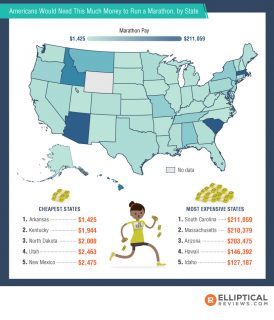
As a dedicated runner, sometimes it’s hard to believe everyone isn’t as passionate about the sport as you. But, sadly, they aren’t. Hundreds of thousands of people run marathons every year, which means that millions of Americans don’t. The folks at EllipticalReviews.com thought it would be fun to take a lighthearted look at the lengths some people would go to avoid running a marathon. Fair warning: Some people really have NO interest in running 26.2 miles! Do these excuses sound like anyone you know?
Out of 2,000 anonymous respondents in the EllipticalReviews.com survey, 53 percent identified as male, and 47 percent identified as female. The ages ranged from 18 to 77, with an average age of 34 years old.
RELATED: The 20 Best Cities to Train for a Marathon
Would you rather run a marathon or …
Choices, choices, choices and more choices—sometimes life can feel like an endless game of “would you rather.” And that’s exactly what the people at EllipticalReviews.com asked 2,000 people. It seems that 42 percent of respondents would rather shave their head than run a marathon.
[image error]
Food over fitness
If forced to make a choice between your favorite food groups (assuming pizza and beer count as food groups) and running, 35 percent of respondents would rather have a slice of their favorite pizza pie than six-pack abs.

Breaking Bod
This was meant to be tongue in cheek—always say “no” to self harm (hill repeats don’t count)—yet 21 percent of those asked said they would break their thumb if it meant getting fit without working out.

Men versus Women
Men and women agree, 26 percent would rather forgo seeing family for six months than running a marathon. Even more women, 38 percent would give up sex for six months if it didn’t mean lacing up for that long run. Men weren’t quite as eager on this front, with only 20 percent thinking it was a reasonable idea.

Run for your money
How many times have you heard, “You couldn’t pay me to do that?” As it turns out everyone has their price, and they are rather high. Respondents in Arizona, Massachusetts and South Carolina said it would take more than $200,000 for them to run a marathon. That will pay for a lot of entry fees!

See the full report here.
The post What Would Americans Rather Do Than Run a Marathon? appeared first on Competitor.com.
7 Pieces Of New Gear Perfect For Chasing New Goals
Whether you’ve set your sights on new goals or simply want to celebrate the new season, treating yourself to fresh gear is often the perfect inspiration for getting out the door on chilly days.
RELATED: Sneak Peek Look at New Outdoor Running Gear for 2017
Photos: Oliver Baker



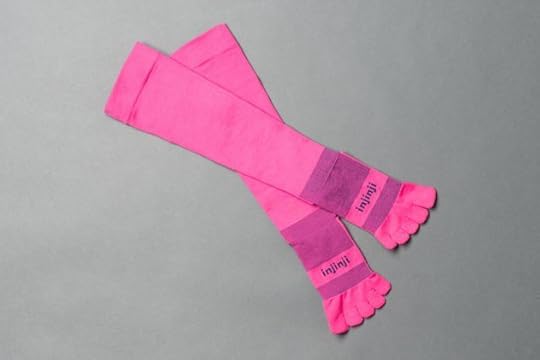
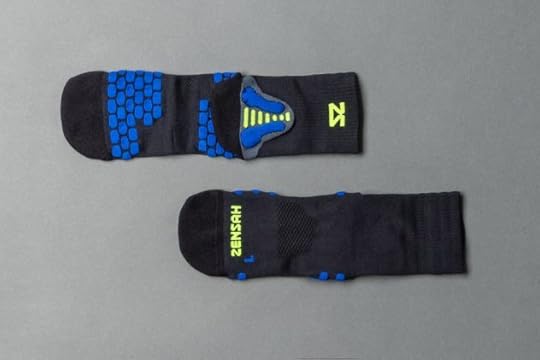
[image error]

The post 7 Pieces Of New Gear Perfect For Chasing New Goals appeared first on Competitor.com.
6 Guilt-Free Chocolate Bars For Runners To Indulge

These aren’t your ordinary chocolate bars. Although sweet and delicious, these bars are chock-full of fuel or nutrition—perfect for runners wanting to avoid the sugar spike of a Snickers bar. With unique flavor pairings and energizing ingredients, go ahead and indulge—guilt-free—in a chocolate bar.
RELATED: 4 Amazonian Superfoods to Include in Your Diet
Photos: Oliver Baker


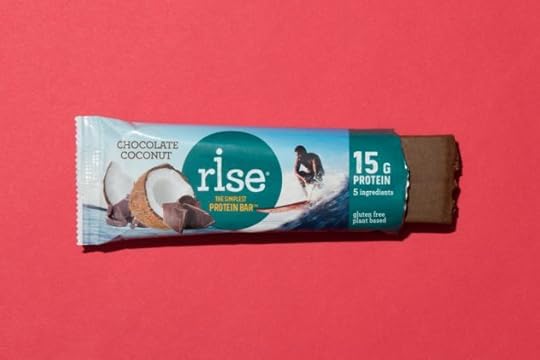
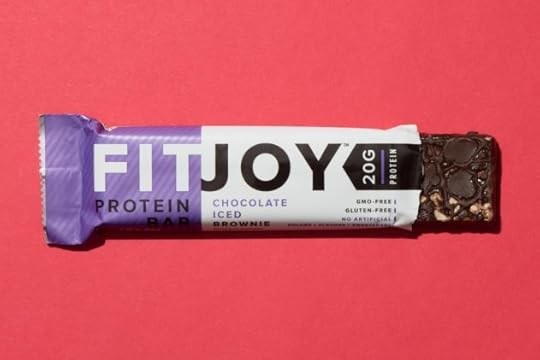
[image error]

The post 6 Guilt-Free Chocolate Bars For Runners To Indulge appeared first on Competitor.com.
Ajee’ Wilson Breaks 14-Year-Old 800-Meter Record at Millrose Games

Ajee' Wilson celebrates her USA indoor 800m record of 1:58.27 set at the 2017 NYRR Millrose Games. Photo: Chris Lotsbom for Race Results Weekly
(c) 2017 Race Results Weekly, all rights reserved
Ajee’ Wilson brought the crowd to its feet at the 110th NYRR Millrose Games, shattering the American indoor 800-meter record in 1:58.27. Wilson and teammate Charlene Lipsey, coached by U.S. Postal Service mail carrier Derek Thompson, led a one-two sweep in one of several terrific races at the New Balance Track & Field Center at the Armory in Upper Manhattan.
“Before we came out here today, my coach knew we were going to go 1:58,” Wilson said, speaking about herself and Lipsey, who became the second-fastest American ever indoors at 1:58.64.
Heading into every race, Thompson is known to give Wilson very specific directions. It has worked in the past, leading Wilson to national titles and global medals. This season, he’s told her to simply run by feel.
With training partner Kimarra McDonald doing the pacing, Wilson and Lipsey both shot to the front and tucked in behind their friend. Just like in practice, the trio rounded the Armory oval and hit 400 meters in 57.15 seconds.
“The last 400m, when she peeled off, I just wanted to keep the momentum going and keep the pace going,” Wilson said. “We knew we could have went 1:58. My coach told us we were in shape to do it so it was something that we were going for.” Wilson emphasized the word “we,” if she was going to succeed, Lipsey would to.
In the final lap Wilson noticed Lipsey was right off her shoulder and closing in. Going to the well, Wilson dug deep and shot to the tape in 1:58.27. When the time popped up on the board, she noticed Lipsey’s mark of 1:58.64. Together, both had dipped under Nicole Teter’s 14-year-old American record of 1:58.71 (set here at The Armory in a national championships race without the benefit of pacemakers).
“I think that was more for my teammate than it was for me,” Wilson said, speaking of her celebration with Lipsey. The pair began training before this season. “That’s a huge PR for her. I’m just beyond excited. It was a big jump for her. She’s come out and trained with us, and it’s definitely been the biggest blessing to my career, to my training. We have a great friendship and I’m super happy for the both of us.”
Also breaking a record was high schooler Sammy Watson. The Henrietta, N.Y., native finished sixth in 2:01.78, shaving .02 from Mary Decker Slaney’s 2:01.8 national high school record.
“My goal was to try to be competitive,” Watson said. “I was just trying to calm my nerves and get the experience of running with the professionals.” She’d only learned that she broke the record when speaking with members of the media.
“I knew if I could go under 1:30 [for 600m] then I could get close to two minutes, very close,” she added.
The post Ajee’ Wilson Breaks 14-Year-Old 800-Meter Record at Millrose Games appeared first on Competitor.com.
February 10, 2017
Research Shows Running Can Help Cure a Broken Heart

Heartbreak hurts. Whether you’ve lost a loved one, broken up with your S.O., or even lost your job, grieving is essential, and everyone has their own unique way of making it through the pain. And yes, that pain is real.
According to a 2010 study at Rutgers University, rejection activates the same areas of the brain as actual physical pain. Turning to ice cream and cocktails may be satisfying for the short term, but they aren’t a long-term answer. Getting physical, as in running, is a healthier coping tool. Not only does running stimulate brain chemicals that fight physical pain, its blood-pumping, stress-relieving, mood- and brain-boosting benefits—the very things that make exercise good for you in general—make it especially valuable when suffering emotionally and mentally.
Marathoner, ultra marathoner, New York City running evangelist and all-around fitness phenom Robin Arzon registered for her first marathon in 2010 to recover from a breakup.
“Owning my space in the world through running repaired my broken heart,” says Arzon, who is now engaged. In fact, she calls running “one of the greatest bonds” with her fiancé, who proposed to her after they crossed the finish line of the 2016 Philadelphia Marathon.
Much of the reason running helps can be traced to endorphins—feel-good brain chemicals that may ease depression, provide pain relief and are responsible for the “runner’s high”—released during a run. Ditto for dopamine, another neurotransmitter released during periods of intense cardiovascular activity that has been shown to help counter mental dark clouds. According to a recent study from the Journal of Neuroscience, movement also increases the brain’s GABA neurotransmitters, which help to control anxiety and fear.
Exercise is a proven self-esteem booster. For an even greater sense of accomplishment, set some goals—attainable ones and stretch ones. Be it running around the block or registering and training for a marathon, striving for and meeting goals will make you feel like a rock star. Once you’re run through your thoughts and emotions, consider running with a friend or joining a running group. Both are ideal ways to connect with others, a proven mood enhancer.
Want to sleep better and reduce stress? Again, running is the answer. The general health benefits of sweating it out are a given for long-term wellness. Running can also help with how you think.
Based on a recent study from the University of Arizona that looked at male, cross country runners age 18–25, running helped improve brain connectivity, thought patterns and decision-making—something that’s often compromised when you are upset. The improvement comes from running’s repetitive motions and the complex cognitive functions that accompany it. When running, you are constantly monitoring your surroundings, traffic, how you feel and more. Those thoughts force you to be in the moment, providing a temporary break from dwelling on your loss.
Running may be the last thing you feel like doing when you’re in the throes of a broken heart, but science and experience say it’s exactly what you need. So take a deep breath, lace up and hit the road (or a trail). Do it again and again and consider even training for a race. The long-term engagement will work wonders for you and your heart.
RELATED: 10 Amazing Benefits of Running You Might Not Have Known
The post Research Shows Running Can Help Cure a Broken Heart appeared first on Competitor.com.
6 Time-Saving Tips for Busy Mother Runners
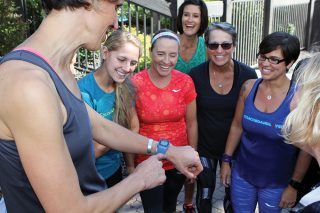
Dimity McDowell, a co-founder of Another Mother Runner, on a training run with "The Tribe." Photo: Gary Peterson
“Don’t think; just go.” A catchphrase for the Another Mother Runner Tribe, this is how founders Sarah Bowen Shea and Dimity McDowell feel about getting out the door for a run because sometimes, no matter how much you love to log miles, the first steps can be the toughest. The goal is to get going before your brain has a chance to register discontent or present obstacles or excuses. Here are some more tips from AMR to help you lace up and go.
Remember, you deserve it.
Moms are known for putting themselves at the bottom of their to-do list. You deserve to be first sometimes, especially when it comes to running!
You’re doing everyone a favor.
Understand that everyone around you, from the grocery store clerk to your co-workers and your kids to your spouse, and especially you, will benefit from you going on a run.
Become a morning person.
Getting up before the sun may not be the most pleasant thing to do, but early-morning runs often mean less disruption in daily life because no one else is jockeying for your time. It creates fewer ripples in the family routine. Plus, once it’s over, you feel like a rock star for the rest of the day.
Prepare ahead of time.
Set running clothes next to your bed at night so it’s easy (and mindless) to get dressed in the morning.
Involve your family.
Whether that means having the kids ride bikes next to you while you run or bringing toys for them to play with at the track—and especially sitting down with your partner to figure out a schedule that works for both of you—if you make it a priority, you can find the time to run.
Invest in gear that fits.
The right sports bra—found by getting measured and trying on different styles—as well as the right running shoes, go a long way in making runs all the more enjoyable.
RELATED: Meet the Women Who Started The Mother Runner Movement
The post 6 Time-Saving Tips for Busy Mother Runners appeared first on Competitor.com.
Meet the Women Who Started The Mother Runner Movement
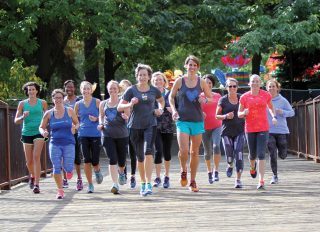
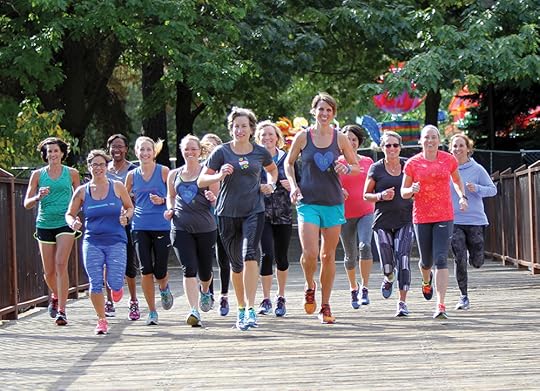
For a woman, being a mom and a runner aren’t always complementary identities. In fact, when you add a career, partner and possibly even a social life to the mix, finding time for all of it can be as challenging as tiptoeing across your child’s room in the middle of the night without stepping on a Lego—you think you have it dialed, then yikes! Everything comes crashing down.
Sarah Bowen Shea and Dimity McDowell began blogging in 2007 about the everyday challenges of training for a marathon while balancing family and work, and their candor struck a cord. Not only did countless other women share similar feelings—no one else was speaking to their concerns. Bowen Shea, age 50, a mother of three, and McDowell, 44, who has two children, decided to expand their thoughts into a 2010 book, Run Like a Mother. Their in-the-trenches-with-you voice created an organic groundswell that eventually led to the development of Another Mother Runner (AMR) and the legions of followers they call “The Tribe.”
Both women began running in college as cross-training for rowing at Colgate University (although they only actually met later at an event for ex-crew members). With sports backgrounds, it’s fair to say they love to compete: Bowen Shea, who lives in Portland, Ore., has run numerous half marathons and marathons, and is a two-time qualifier for the Boston Marathon, while McDowell, who lives near Denver, has completed races of varying distances, including an Ironman triathlon. But the two also enjoy the simple sense of accomplishment that comes from forward motion and enjoying a good run, alone or with friends.
The result is a burgeoning business—books, podcasts, training programs, merchandise—centered around positivity and a community approach to running. In addition to meeting people where they are and sharing the idea that running should make you feel better, the AMR Tribe embraces the perfection in imperfection: Understanding that the best stories and learning moments are usually the ones where everything doesn’t go as planned.
We caught up with Bowen Shea and McDowell after their second annual AMR Women’s Running Retreat, this time in Spokane, Wash., to learn more.

What were your goals when you started Another Mother Runner (AMR)?
Dimity: We didn’t set out to start this. We started out training for a marathon together because we wrote about it for a magazine. While training we were also blogging about it on the magazines’ website. And we discovered this whole group that wasn’t being spoken to.
Why do you think AMR has resonated with so many people?
Dimity: Our runners know there is a place for them no matter what. Whether they nail the race or come in just in front of the SAG wagon, they are welcomed and appreciated and their effort is valid. Running has a more inclusive feel than it used to, but there is still intimidation, judgment and people sizing each other up at races. Someone can comment on our Facebook page that they are going to run their first half marathon and want to finish it in less than three hours. Suddenly 50 women chime in to validate their experience. There is something about knowing that other people are going through the same thing you are that is liberating and empowering. We have a very positive space.
You two have developed a massive community through AMR. Have you always leaned toward running in groups?
Dimity: I’m a solo runner by choice and circumstance. I live in a neighborhood full of active women but we are all on different schedules. On a day-to-day basis, I’m solo. But there are times when I run with a wonderful posse of women, and I also have a go-to friend for running trails.
Sarah: I’m self-motivated, but I have a running friend who means the world to me. The friendship wasn’t something I was looking for, but we found each other, and there is no end to the depth of love I have for running with her.
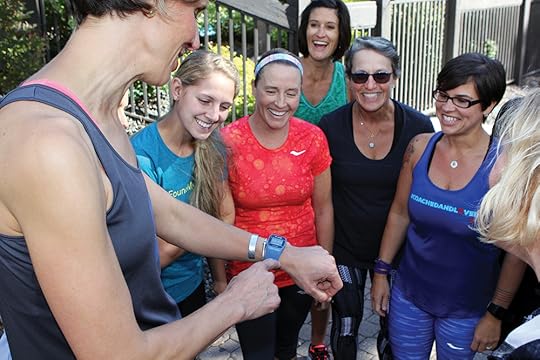
Two self-starters at the head of a wildly popular running group. How does that work?
Dimity: I don’t think it’s as much of a gap as it seems to be on the surface. The reasons why we run aren’t different from other women. I struggled with post-partum depression after my first child was born. I started running while pregnant with my second child in hopes of not going back to that depressive place. I’m running for my head and my body, as much as the miles. Other moms can relate to that.
What makes you proudest when you reflect upon the growth of AMR so far?
Sarah: We’ve found a balance and a tone and an attitude that speaks volumes to so many women. It’s a conversation that’s natural. We don’t have to force it. The honesty is there and feels rewarding and gratifying.
You launched Train Like a Mother this year. What was the impetus for expanding into training?
Dimity: A lot of women run solo. Motherhood and parenting is pretty isolating. You go from being a total free agent to having to adhere to the schedule of a colicky or fussy baby who won’t sleep through the night. It makes connections harder. A training schedule provides those connections and gives some of your time back to you.

What Makes training program unique?
Dimity: We offer support from the first step to the finish line for 5Ks to marathons. The race is always the party, but you have to put in the work to get the medal and the T-shirt. We offer a private Facebook page, have call-in office hours with a coach, send weekly emails, have a Strava page and also answer questions on our podcast. We try to give people all the tools they need, including HR training instruction, strength training routines, resistance band exercises and Bosu Ball work. Even if you are running alone you have all these people on your shoulder encouraging you. It makes you feel like you have a team.
Given the name “Another Mother Runner,” has there been interest from non-moms who want to get involved?
Sarah: We think of ourselves as a community of women runners, AMR is just the name of the business. Our Tribe includes moms of fur babies and women without children too. We even have dads involved. They have their own Facebook page, Train Like a Father, but they aren’t quite as chatty as the women.
While plenty of people still “race,” there’s a growing emphasis on “participating” at races. Where does AMR fit in the scene?
Sarah: We appeal to middle and back-of-the-pack runners and new runners. The party is at the back of the pack! There are lots of retro grouches at the front of the pack grumbling about having to accommodate new racers. In reality it’s the middle- to back-of-the-packers keeping these races alive because their numbers are way greater. If racers want race options, they have to be accommodating to runners of all abilities. There’s enough bananas and chocolate milk for everyone.
Dimity: There is a place for everybody on the road and the trail. That’s what’s so great about our sport. I love watching runners who go fast and am inspired by them. They are great role models, especially the mother runners. But I also feel like your race time isn’t going on your gravestone. No one cares how fast you went. People care if you’re fun to hang out with, to have a beer with, if you’re enthusiastic about cheering for others.

What about the state of women’s running?
Dimity: Looking at the numbers, women are dominating every race distance up to the marathon. It speaks to how empowering the sport is for us. Running is such an encouraging sport overall. A lot of the intimidation and judgment we perceive as women or beginners is from our own anxiety.
The number of runners is on the rise, but so are obesity rates. Is it time to rethink the ideals of fitness and weight?
Sarah: A lot of women take up running to lose weight. But you don’t necessarily lose weight when you’re training for a race. Studies are coming out saying that people who are slightly overweight have longer life expectancies than super skinny people. Everyone who starts running is going to get healthier because of it. They may not be a size 4 or 6, but arteries will be less clogged because of it, and blood pressure will come down. While weight may not change, overall health improves.
You have “TMI Tuesday” on the AMR Facebook page, and it can get rather graphic. How does your audience respond?
Dimity: People love when we take it too far because no one is talking about these topics. Once you’re a mom, things shift and change and fluids ooze out of orifices you’d rather they not. No one is being honest and candid about those things (like having your period on race day, pre-run sex and leakage). We give women the opportunity to not suffer in silence anymore, and they learn solutions. They realize, “Thank God it’s not just me.”
RELATED: 14 Fast Mother Runners
The post Meet the Women Who Started The Mother Runner Movement appeared first on Competitor.com.
February 9, 2017
Strength Train Like a Dancer—The Barre Circuit Workout
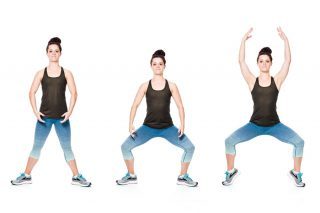
At first, you may see few similarities in the skill-sets of a ballerina and a distance runner. One values grace and precision, while the other is all about grit and endurance. It turns out, however, that a ballet-inspired workout can actually improve running performance.
Enter the barre circuit. In sculpting and toning muscles, barre workouts combine classic ballet poses with isometric movements. Isolating and contracting specific muscles while keeping the rest of the body still is barre’s secret to success. What’s more, the low-impact sweat session is a nice break from pounding pavement.
Start with a 10-minute warm-up prior to this workout. While you don’t need an actual ballet barre to complete it, having a chair with a high back nearby will help for balance. Do each move for 30 seconds and then take a 10-second break before doing the next move. At the end of the circuit, take a minute to recover and then repeat the circuit. Complete the sequence 3–4 times through.
RELATED: 6 Plyometric Exercises That Will Give You a Leg Up
Boat Pose
Sit on the floor with your knees bent. Lean back as you bring your feet off the floor, balancing on your sit bones. Point your toes and straighten your legs in the air to form a “V” with your body. Be sure to keep your back straight as you hold this pose for 30 seconds.

Forearm Plank Knee Taps
Get into plank position on your forearms with your shoulders above your elbows and your feet shoulder-width apart. Slowly alternate between tapping your right knee to the floor and then your left. Repeat for 30 seconds.

Plié Squat to Heel Raise
Keeping good posture in your back, squat down with your feet in a wide stance and your toes pointing outward. Once you reach a full squat, lift up onto your toes as you slowly raise your arms overhead. Come back down on your heels and repeat.

Narrow V
Stand next to chair with one hand on it for balance, and bring your heels together with your toes pointing slightly outward. Come up onto your toes and slowly bend your knees as you bring your body town into a plié. Stand back up and repeat.

Carousel Horse
Place your hands on the back of the chair standing with your feet hip-width apart. Step your right foot back to lower into lunge position. Carefully and slowly pulse up an inch or two and back down. Repeat for the entire 30 seconds and switch sides.

RELATED: Tabata-Style Workouts
The post Strength Train Like a Dancer—The Barre Circuit Workout appeared first on Competitor.com.
February 8, 2017
One Step At A Time: A Film About Running the Pacific Crest Trail
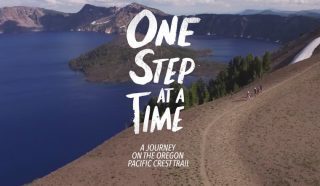
Last summer, three ultrarunners, Yassine Diboun, Scott Loughney and Travis Liles, attempted to run 453 miles along the Pacific Crest Trail, crossing the entire state of Oregon from the Oregon/California border to the Oregon/Washington border. With help from a tireless support crew, Diboun and Loughney successfully set a new supported fastest known time (FKT) on the route of eight days, 12 hours and 5 minutes, beating the previous record of eight days and 19 hours held by Joe McConaughy, and raised money for three charities while doing it. (They originally aimed to beat the self-supported FKT of 7 days and 22 hours set by Brian Donnelly in 2013, but had to quickly adjust to the new goal in the final days of the run.)
Nearly seven months later, Pursuit Films with sponsorship from trail running brands Inov-8 and Territory Run Co., has released “One Step At A Time,” a 30-minute documentary about the three men’s journey on the Oregon Pacific Crest Trail. It’s a story of trial and triumph, and an incredible exertion of human will.
You can watch the entire film on Vimeo On Demand.
PHOTOS: Running 453 Miles of the Pacific Crest Trail in Record Time
RELATED: Running 453 Miles on Oregon’s Pacific Crest Trail in 8 Days
The post One Step At A Time: A Film About Running the Pacific Crest Trail appeared first on Competitor.com.
Shoe of the Week: Brooks Launch 4
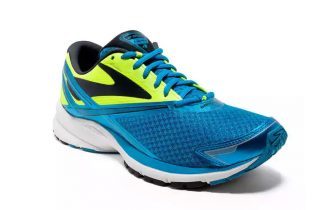
Fans of the Launch will remain devotees to this neutral lightweight trainer, tempo shoe or cushioned racer, depending on the runner. Most of the revisions are in the 3D printed upper, which saves some weight while providing, stretch, structure, better breathability and almost seamlessness. The outsole was altered with blown rubber in the forefoot instead of harder carbon rubber, making for softer toe-off but with less durability. The other re-designs in the heel and midsole were minor enough that our testers felt they were princess-and-pea modifications—the shoe still feels like the lightweight slipper that delivers fairytale magic on the road.
This is the shoe for you if … you prefer a light and responsive ride that supports your natural stride with a little bit of bounce.
Price: $100
Weights: 9.0 oz.
Heel-toe offset: 10mm
Info: Brooksrunning.com
RELATED: Shoe of the Week—Skechers Performance GoMeb Razor
The post Shoe of the Week: Brooks Launch 4 appeared first on Competitor.com.
Ryan Hall's Blog
- Ryan Hall's profile
- 21 followers



